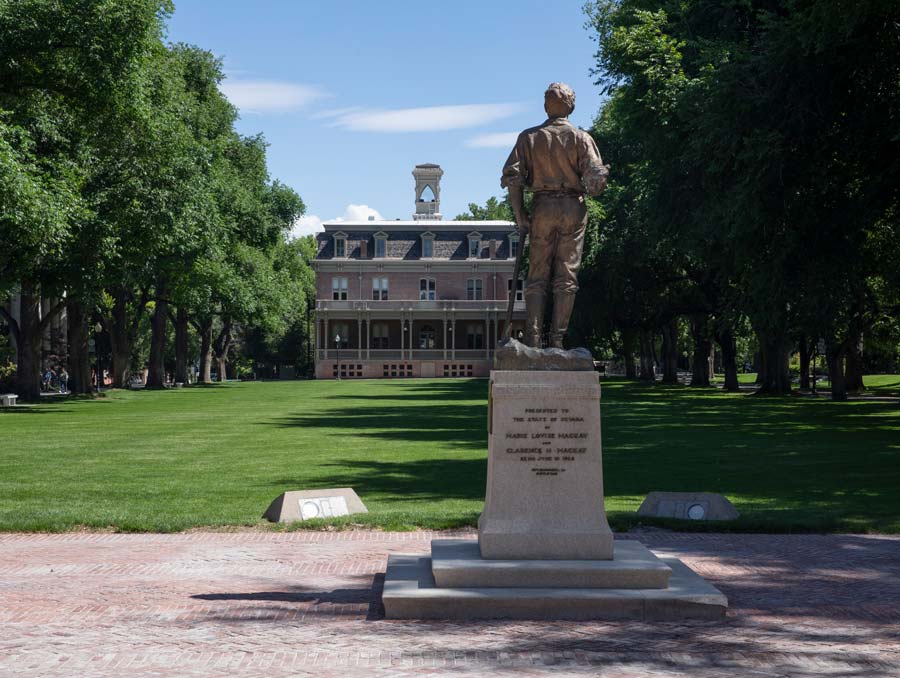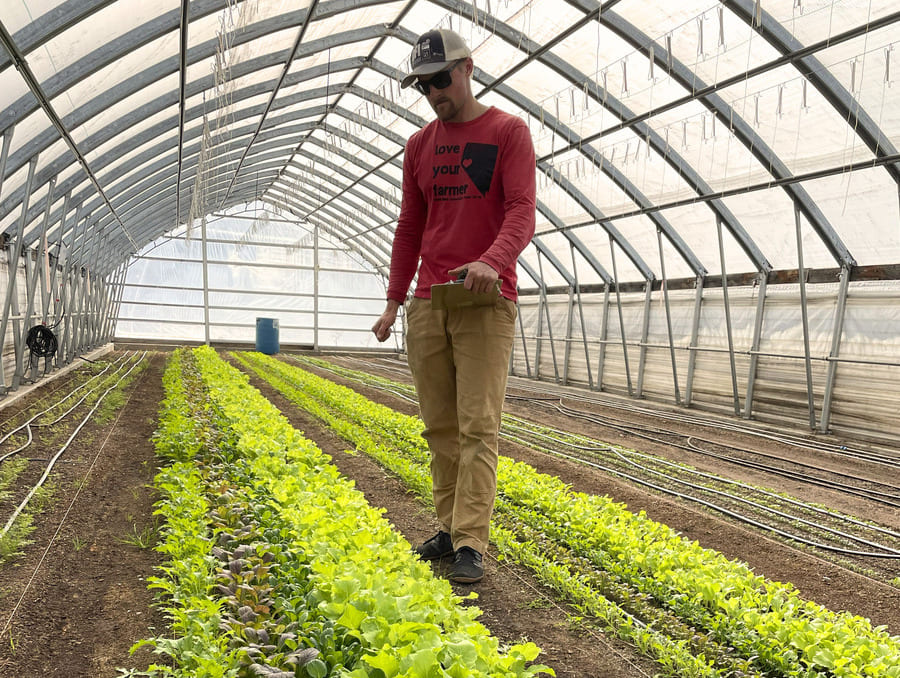Nevada State Climatologist and Associate Professor of Geography Steph McAfee and geography and environmental science undergraduate student Benjamin Khoh recently prepared an update about Nevada’s drought. The update was shared through the Living with Drought program and is published below. Living with Drought is a collaborative program that provides information to help Nevadans prepare for, respond to and recover from drought.
The wet winter has lingering effects, but drought persists in Clark County.
Current drought conditions in Nevada and across the West
After a wet winter and, in parts of northern Nevada, an unusually wet spring, much of the state is drought-free. There is still a swath of D0-Abnormally Dry conditions stretching from far northwestern Nevada southeast through Nye, Lincoln and Clark counties. There are relatively few long-term weather stations in Pershing, Churchill and northern Washoe counties, so tracking drought has been challenging there. Any observations from the area will help fine-tune whether D0-Abnormally Dry is warranted in the region. D1-Moderate and D2-Severe Drought remain in southern Nye and Lincoln Counties and in Clark County.
There were few changes in drought over Nevada in the last month. A longer view shows significant improvements since this time last year, when over 99% of the state was in D2-Severe or deeper drought.
Across the West, drought remains in Oregon, northern Idaho, parts of Montana, and far eastern New Mexico. Many regions have seen improvements, with much of eastern Colorado experiencing 1-2 class improvements. Dry conditions in May drove degradations in coastal Washington and Oregon and over Yellowstone National Park in Wyoming and Montana.
May Temperature, Precipitation & Snowpack
May proved to be a varied month. In much of northern Nevada, temperatures were 1-3°F above average. However, along the Sierra front and down into parts of central Nye County, temperatures were near normal or even a little cooler than recent May averages. Parts of Pershing, Churchill and Humboldt counties received upwards of 190% of the normal May precipitation. Other parts of northern Nevada were also wetter than normal. In southern Nevada, precipitation ranged from less than 10% of the usual paltry May totals in western Nye and Esmeralda Counties to just above normal in parts of Clark and southern Nye Counties.
By late May, there usually isn't enough snow in the Great Basin to track it. However, the Sierra Nevada snowpack is still robust by end-of-May standards. At many stations that normally have no snow by the end of May, there is still a foot or more of water stored in the snowpack. Snowpack remains above normal in most of the Upper Colorado, as well, boding well for summer runoff into Lakes Powell and Mead. Even the Humboldt, which was not as snowy as other basins this winter, still has above normal snowpack.
Soil Moisture
A band of dry top and subsoil soil stretches from Esmeralda County into extreme southern Clark County, indicative of drought conditions in the region. However, soils from Douglas County north into Washoe are much wetter than normal. Far eastern Nevada also has very wet soils, as do north-central parts of the state.
Most Nevada reservoirs are doing quite well, and several are fuller than normal for this time of year. Even Rye Patch Reservoir, which has been very low for a very long time, is near normal late-May capacity. Lake Mead rose above 1,050', the trigger for Level 2 shortage, during May. Even pessimistic inflow projections suggest that lake elevations will rise through summer, plateau, and rise again during the winter of 2024.
Most streams had above-normal or much-above-normal flows during May. At least one of the low flows is due to management decisions. The Truckee canal is currently undergoing lining and repair. These cold, fast flowing rivers and streams can be dangerous, so know the risks and take appropriate precautions.
Looking forward
What does the summer hold for drought? Summer precipitation is predictably unpredictable, with equal chances of a wet, dry, or normal summer. The North American Monsoon, which brings summer storms to far southern Nevada is challenging to forecast weeks in advance. Summer rainfall in the rest of the state comes from spotty thunderstorms. The lack of a large-scale driver for those storms makes seasonal-scale forecasts very difficult.
The summer temperature outlook favors warmer than normal temperatures this summer. There's a 40 - 50% chance that summer will be warmer than normal. Higher temperatures can increase the atmosphere's demand for moisture, so soils and finer vegetation, such as grasses, herbs and shrubs, could start to dry out quickly as temperatures rise.
However, the wet winter and, in some places, a wet spring have resolved drought and, hopefully, provided a buffer against a rapid return to drought. As a result, the small amount of drought remaining in southern Nevada is expected to improve or even resolve. Northern Nevada is expected to remain drought-free.
Wildfire risk also ramps up in the summer as the springtime vegetation growth starts to dry out and become wildfire fuel. However, due to the wet winter and spring, much of Nevada has a normal or below normal fire risk for June. Later in the summer, northwestern Nevada has a higher-than-normal chance for significant wildfires. Below normal significant fire risk in the Sierra may reduce the risk of smoke this summer (fingers crossed!). Below-normal risk doesn't mean no risk, so it is still important to practice fire safe practices during the spring, summer, and fall months. Ready.gov provides tips and precautions if you find yourself within the reach of a wildfire. Living with Fire provides local information and resources for Nevadans.
















